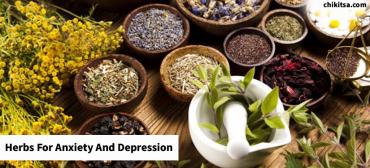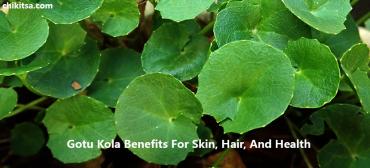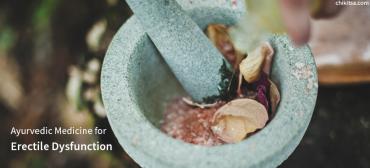8 Branches of Ayurveda

The description of detailed information of various branches of Ayurveda in the Vedas is not well organized.Ayurveda has Eight Branches. Ancient physicians gained the knowledge of Ayurveda from vedas and decided to classify it into eight branches as 'Ashtanga Ayurveda'
This Consists of Eight Classifications, viz.,
1. Kaya chikitsa (Internal Medicine)
2. BalaChikitsa or Kaumarbhrutya (Gynaecology and Pediatric's)
3. GrahaChikitsa or Bhutavidya (Demonology)
4. UrdhvangaChikitsa or Shalakyatantra (ENT and Ophthalmology)
5. Shalyatantra (Surgery)
6. DanshtraChikitsa or Agadtantra (Toxicology)
7. Rasayana (Rejuvenation Therapy)
8. Vajikaran (Aphrodisiac Therapy)
1.Kayachikitsa(Internal Medicine)
CharakSamhita is the most important scripture of Internal medicine. It provides precise information on basic principles of treatment, various types of therapies, including the purification methods, i.e., Panchakarma; detailed account of diagnosis and various diagnostic methods, differential diagnosis along with the comprehensive management of diverse diseases like diabetes mellitus, hepatobilliary disorders, fevers, infectious diseases, arthritic conditions including the conditions like rheumatoid arthritis and osteoarthritis; asthma, tuberculosis and many others.
2. ShalyaTantra(Surgery)
Surgery is not an invention of modern medicine. It was highly advanced in several ancient cultures, including those of India, Greece and Egypt. However, Ayurveda is the pioneer in the art of surgery. A number of surgical procedures like resection of the obstructed intestinal loop, surgical removal of bladder stone, surgical management of ascites, excessive hemorrhage etc. have been described in SushrutSamhita and AshtangaHridaya.
3. ShalakyaTantra(ENT and Ophthalmology)
This branch includes the description and treatment of diseases of head, ear, nose, throat, and eye. SushrutSamhita and AshtangaHridaya stipulate drug therapy of different types of conjunctivitis and glaucoma, along with surgical procedure of the removal of cataract and cosmetic surgery such as rhinoplasty and auroplasty (reformation of traumatized nose and ear). Apart from these complicated diseases, a simple home remedial approach of these ancient scholars towards minor problems like wax in ear, dryness of eyes due to fatigue, coryza, migraine, mouth ulcers etc. form a base for the home remedies, which are successfully administered even today.
4. Kaumarabhritya(Pediatric's)
This branch gives detailed information of pediatrics (prenatal and postnatal baby care) and gynecology. Ayurveda describes a special method called "PunsanvanVidhi" for having a child of the desired sex, intelligence and constitution. It describes the description and treatment of various disorders of children such as gastro intestinal diseases, teething disorders, rickets, etc. Also, the conduct for women during pregnancy and after delivery, various causes and treatment of infertility (inability to have a child), and other common disorders of women like white discharge, excessive bleeding during periods, endometriosis etc. are described in detail.
5. Agadatantra(Toxicology)
This branch deals with various natural poisons/toxins originating from minerals, plant and animal kingdoms as well as artificial poisons prepared from poisonous drugs. The description is available in all the three treatises i.e. CharakSamhita, SushrutSamhita and AshtangHridaya. It also includes description and disadvantage of food of opposite qualities, drugs and food causing chronic poisoning symptoms, and different methods used in ancient times to administer poison in an enemy's body system. Interestingly, the concept of pollution of air and water has also been considered. Such pollution is said to be the cause of various epidemics and the reason for the collapse of several civilizations.
6. Bhutavidya(Demonology)
This unexplored branch of Ayurveda deals with the effects of various super-natural forces on human mind and body. The description of these so-called super natural powers resemble to that of viral and bacterial infections in some instances. Also, the mention of use of many disinfectant plants under the title of 'GrahaVidyaDravya' for fumigation, to make the atmosphere germ free also supports this comparison. This subject needs much study and research.
7. Rasayana(The Science of Rejuvenation)
It is described in detail in CharakSamhita and a brief account is given in AshtangaHridaya and SushrutSamhita. This therapyis used to prevent diseases and promote a long, healthy life by delaying old age and increasing longevity. The rejuvenation process requires that we observe the Right conduct in life. This is described under the title of AacharaRasayana.
8. Vajikaran(Aphrodisiacs)
This branch discusses the therapeutic use of various aphrodisiacs for enhancing the vigor and sexual capability of males. It also includes the description of drugs, which improve sexual capacity by controlling premature ejaculation or/and by curing other male sexual disorders.In contrary to the popular misbelief, Ayurveda is not a mere alternative therapy but a way of life, which, if followed religiously, can help one attain a better physical, emotional, social and spiritual life through which one can attain: Dharma (One's duty towards one's own self) Artha (One's duty towards one's family) Kama (Fulfillment of all the worldly desires) Moksha (Salvation)










